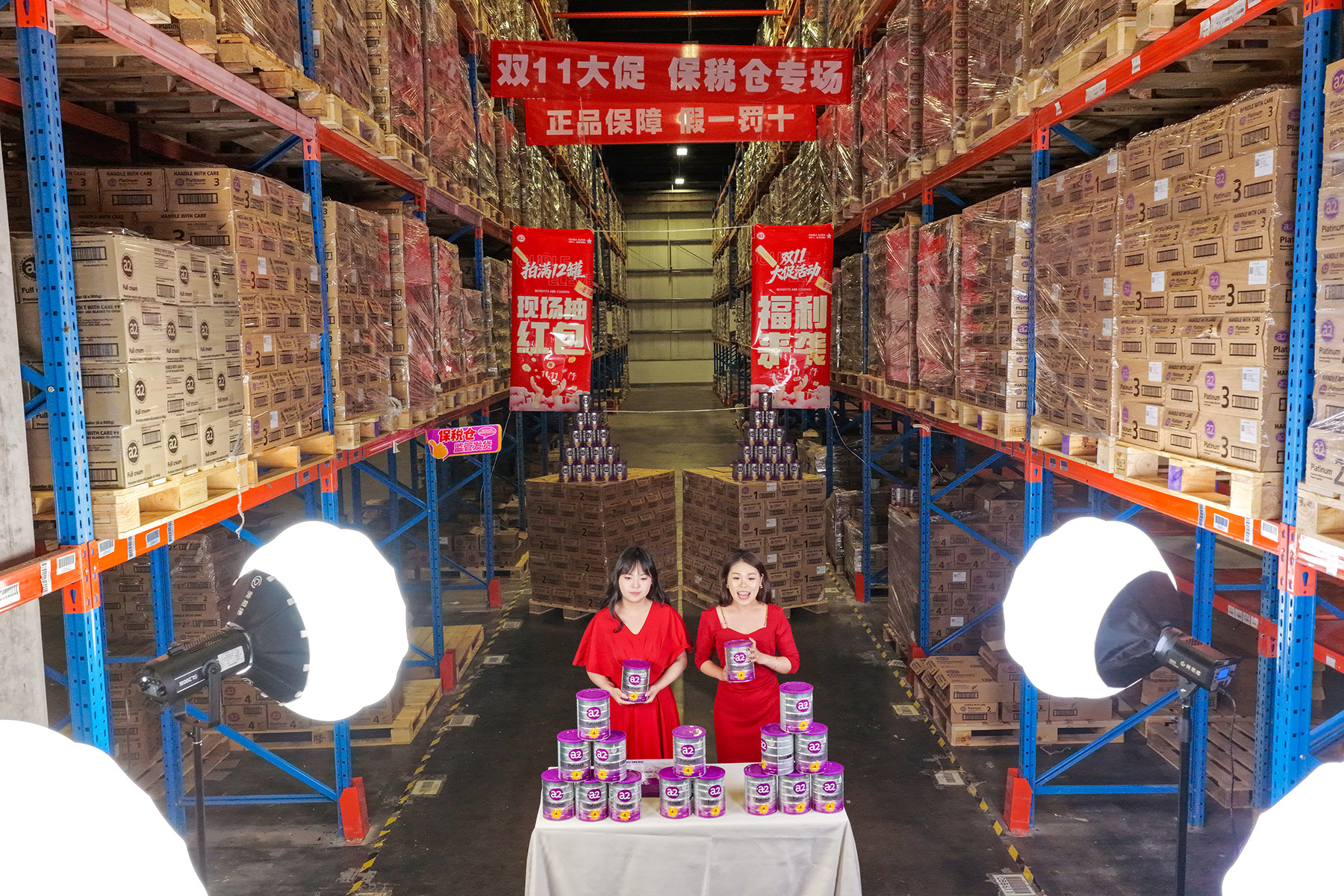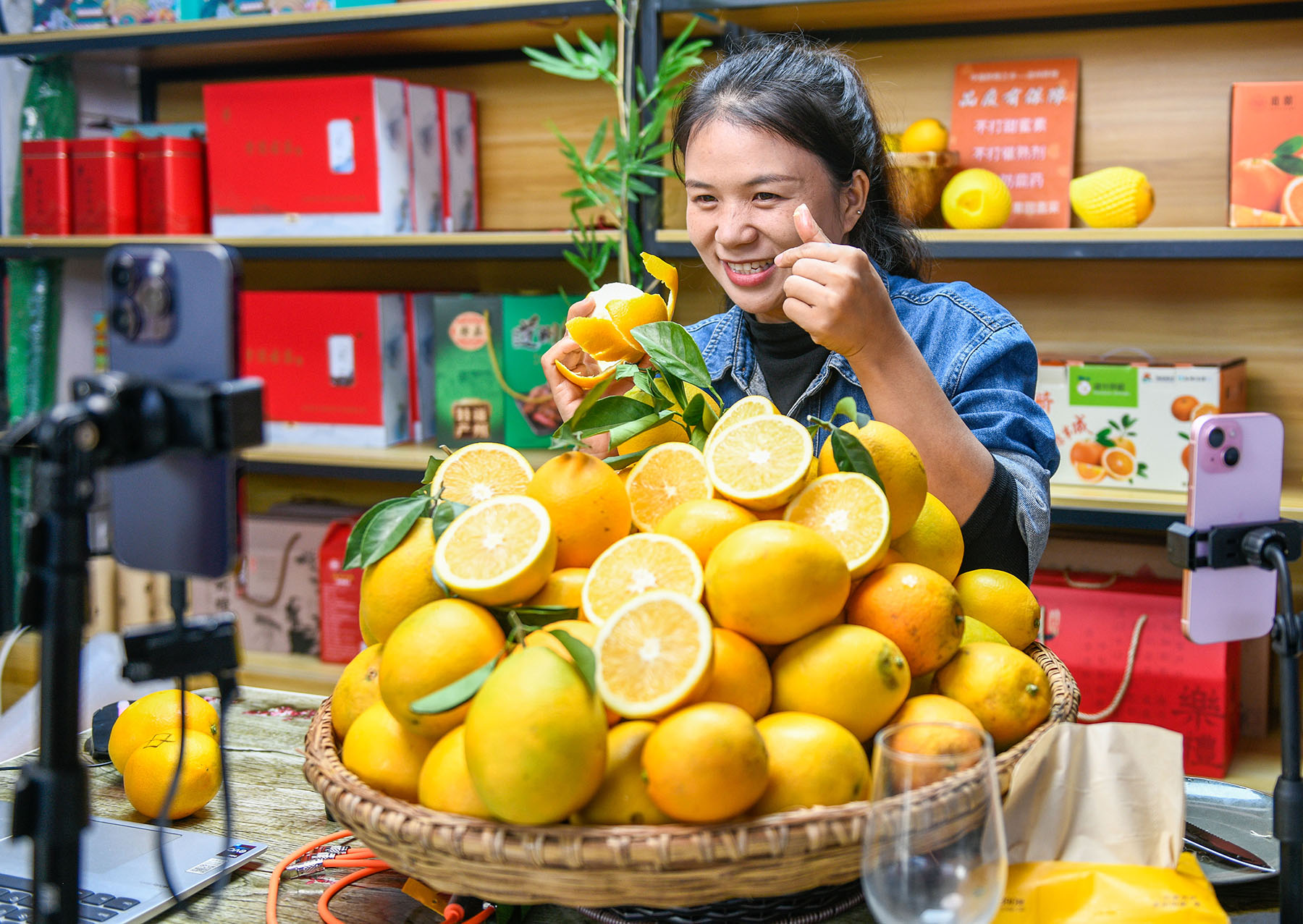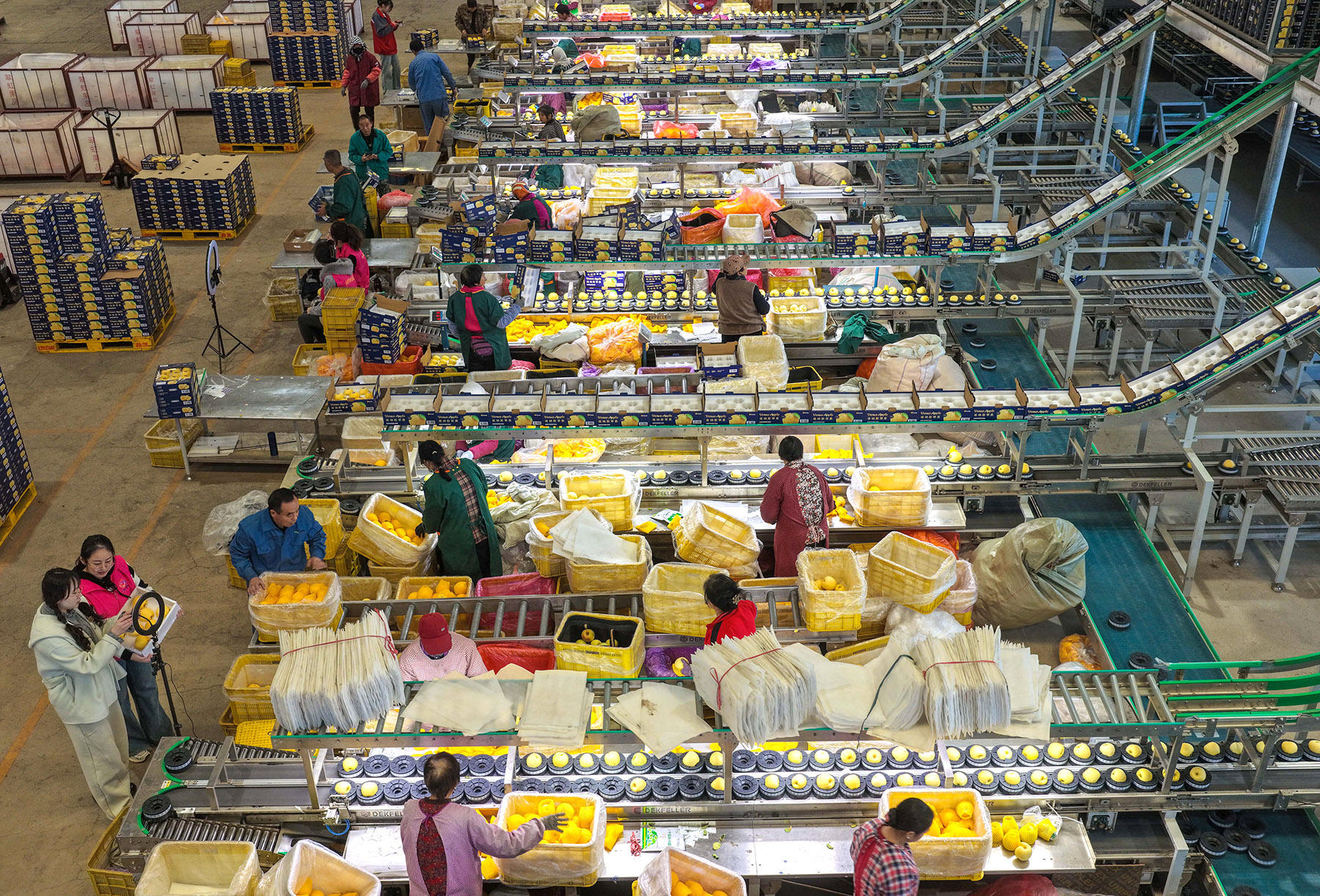Singles Day shopping festival and promotions reach whole new level

When tech heavyweight Alibaba launched Singles Day on Nov 11, 2009, it was just a 24-hour promotional event. But its rapid evolution over the past 16 years has seen it stretch into a nearly four-week extravaganza and become the world’s biggest online shopping gala.
In the past, smashing records for gross merchandise volume, or GMV, through discount-led sales had come to characterize the promotional campaign.
However, chasing high GMV is no longer the focus of Singles Day, or Double Eleven. Major e-commerce platforms are shifting toward a technology-driven, high-quality growth model that places emphasis on the improvement of efficiency and enhancing customer experience.
This year’s promotional gala has witnessed the large-scale adoption of artificial intelligence (AI) technology to improve merchants’ operational efficiency, offer shoppers personalized recommendations, and bolster the sales of products, said industry experts.
They highlighted the significant role of the shopping carnival in unleashing domestic demand and driving the recovery of the consumer market, given that boosting consumption is a top priority for China’s economic growth this year.
Online retailers have extended the promotional period and stepped up efforts to provide discounts and shopping subsidies, while simplifying promotion methods, with direct price cuts the preferred strategy to lure price-conscious consumers.
Data from Tmall, Alibaba Group’s business-to-customer platform, showed that in the first hour after the shopping carnival kicked off at 8 pm on Oct 20, 80 brands witnessed their sales surpass 100 million yuan ($14 million).

Within the first hour of the gala, the turnover of more than 30,000 brands doubled year-on-year, while the sales of over 18,000 brands exceeded that of the entire day last year.
According to JD, another major e-commerce player, as of 11:59 pm on Nov 11, the number of users placing orders grew by 40 percent year-on-year, and the order volume was up by nearly 60 percent.
Consumer electronic products witnessed robust growth in sales. During the shopping festival, the turnover of AI-enabled tablets and large-screen smartphones via JD’s online marketplaces surged by 200 percent and 150 percent year-on-year, respectively.
The sales of AI glasses and AI speakers doubled year-on-year, while the transaction volume of home appliances and furniture soared by 150 percent from a year earlier. In addition, outdoor sporting goods, beauty and skin care products, apparel, and trendy toys have gained popularity among Chinese consumers.
Liu Bo, president of Tmall, said this year’s promotional campaign presents the most significant opportunity for brands throughout the year, and “its role in driving brands’ business growth is irreplaceable and increasingly vital”.
Liu highlighted the importance of the convergence of AI and consumption, saying the company is doubling down on AI and aims to help merchants improve product quality and operational efficiency.
Alibaba has accelerated steps to promote the large-scale deployment of AI on Taobao and Tmall, and integrate large language models into the platforms’ core search and recommendation engines to entice more consumers and increase sales.

JD’s AI-powered digital humans assisted more than 40,000 merchants in livestreaming sessions during the shopping festival, and the number of inquiries handled by intelligent customer service chatbots topped 4.2 billion, JD said.
Online discounter PDD Holdings is using AI to analyze market trends and consumer needs and preferences, while optimizing sales strategies to improve shopping experiences.
The State Council, China’s Cabinet, issued a guideline in August on deeply implementing the “AI Plus” initiative. The country will promote the use of AI in science and technology, industrial development, consumption, people’s well-being, governance capability, and global cooperation, as per the guideline.
“AI technology is deeply reshaping the decision-making process and operational efficiency in the retail sector. Consumers can precisely select products by using AI-powered search tools, while AI will help merchants lower operational costs and improve efficiency in terms of product design, marketing, and customer services,” said Hong Yong, an associate research fellow at the Chinese Academy of International Trade and Economic Cooperation.
The large-scale use of AI signals that the e-commerce industry is gradually transitioning from dependence on online traffic toward an innovation-driven growth stage fueled by the accelerated application of AI-powered intelligent recommendations, customer services, and virtual shopping guides, he said.
“The shopping festival empowered by AI not only offers consumers a smarter and more convenient shopping experience, (it) also creates immense growth opportunities for brands and merchants.”

Hong believes China’s consumption market is poised for steady growth this year, with a significant rebound expected in durable goods, electronic devices, and home appliances, fueled by the consumer goods trade-in program and discounts provided by e-commerce platforms.
Jason Yu, general manager of CTR Market Research, said this year’s promotional gala marks a significant milestone for AI’s widespread application in the e-commerce industry, as online retailers have provided shoppers with tailor-made recommendations and guidance based on their preferences by leveraging AI tools.
Yu said the meteoric rise of instant retail will be a “new battlefield” for major internet and e-commerce companies, adding that the integration between online and offline shopping will be the future direction for the retail sector.
Instant retail refers to a model where shoppers place orders on online trading platforms, followed by retailers from brick-and-mortar stores executing door-to-door deliveries themselves or through third-party delivery platforms. An on-demand delivery order usually requires 30 to 60 minutes to be completed.
Hong said instant retail model will unlock tremendous growth potential, further blurring the boundaries between lifestyle services and online shopping, and driving the expansion of service-oriented consumption.
As Alibaba’s significant investment in instant retail, Taobao Instant Commerce participated in the promotional event for the first time. A total of 37,000 brands and 400,000 offline stores have been connected to the company’s instant retail business.

JD is also accelerating its expansion in the fast-developing instant retail sector. The company’s local life business unit joined hands with more than 3 million merchants from the catering and hospitality sectors to take part in the Singles Day shopping spree for the first time.
According to a report from the Chinese Academy of International Trade and Economic Cooperation, the market scale of China’s instant retail sector reached 650 billion yuan in 2023, up 28.89 percent year-on-year. The figure is expected to surpass 2 trillion yuan in 2030.
Hong said the instant retail is expected to evolve from a supplementary business into a core battleground for major e-commerce players, highlighting that the competition centered on “speed” and “experience” is not only transforming the e-commerce landscape, but also signifying the arrival of a new retail era marked by the in-depth integration of online and offline shopping.
This year’s Government Work Report listed vigorously boosting consumption and expanding domestic demand across the board as key priorities for 2025.
“Consumption has become the main driving force boosting China’s economic growth, and the Singles Day shopping extravaganza is pivotal to stimulating people’s purchasing appetites, bolstering domestic demand and promoting consumption recovery,” said Wang Yun, a researcher at the Chinese Academy of Macroeconomic Research.
China’s retail sales, a significant indicator of consumption strength, went up 4.5 percent year-on-year in the first three quarters of this year, as per official data. Online sales remained a bright spot, climbing 9.8 percent year-on-year during the January-September period.

Pan Helin, a member of the Ministry of Industry and Information Technology’s Expert Committee for Information and Communication Economy, said that to further vitalize the consumer market and shore up economic growth, more stimulus policies are needed to increase household incomes, stabilize and expand employment, and nurture diversified purchasing scenarios and new types of consumption.
The country has announced a raft of measures to expand the scope of the consumer goods trade-in program, increasing funding from 150 billion yuan last year to 300 billion yuan through ultra-long-term special treasury bonds, and offering subsidies for more home appliances and electronic devices such as smartphones, tablets and smartwatches.
Zhang Yunfang, 33, a white-collar worker in Beijing, bought a new refrigerator on JD’s online marketplace during the shopping promotion, and enjoyed a discount of about 20 percent with the national subsidy and shopping coupons offered by the platform.
Mo Daiqing, a senior analyst at the Internet Economy Institute, said: “The expansion of the trade-in program has not only motivated consumers’ enthusiasm to purchase and bolstered the sales of consumer electronic products and household appliances on online marketplaces, but also propelled the popularity of green and energy-saving commodities.”
Chinese shoppers are becoming more rational and carefully review their needs, with an emphasis on the quality and value of commodities. “They are inclined to purchase premium merchandise with high cost-effectiveness,” Mo said.
Retailers should step up investment in technological innovation, elevate the quality of products, and upgrade supply chains to attract more young shoppers, she added.
In the meantime, Chinese e-commerce platforms are accelerating steps to expand their global presence to seek new growth engines and reach potential overseas customers.

A report released by global consultancy Bain & Company, said this year’s shopping festival had become more international with Chinese e-commerce companies speeding up their overseas expansion and driving rapid growth in international markets.
Alibaba’s Taobao launched simultaneous promotions in 20 countries during the shopping spree, which not only demonstrated the global influence of the promotional gala, but also reflected the proactive exploration of Chinese e-commerce companies in overseas markets, the report said.
In the Southeast Asian market, Chinese e-commerce players account for as much as 50 percent of business-to-consumer e-commerce GMV in Indonesia, Thailand, and the Philippines.
Beyond the region, Alibaba’s cross-border e-commerce platform AliExpress, Shein, and Temu have established a solid presence across Latin America, the Middle East, and parts of Europe.
Han Weiwen, senior partner and Asia-Pacific retail practice leader at Bain & Company, said Taobao’s expansion into 20 markets during this year’s shopping festival is a clear sign of Chinese e-commerce globalization.
“Leveraging the innovation capabilities accumulated in the domestic market, Chinese e-commerce firms have already established a unique competitive advantage worldwide,” Han said.
“As Chinese players adapt to local customers, culture, and rules abroad, we can expect more M&As.”
Contact the writers at fanfeifei@chinadaily.com.cn


